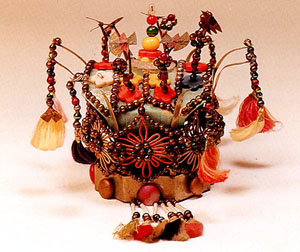
Like the ceremonies accompanying marriage, burial, and memorial after death, the coming of age ceremony is one ofKorea’s four traditional ceremonies that mark major steps in the life cycle. The coming of age ceremony marks the transition from childhood to adulthood. In
Traditional coming of age ceremonies were held differently to men and women, and were called kwallye and kyerye respectively. These names describe the different styles of the male and female initiate’s hair after the ceremony. Men wore a hat called a kwan and women wore a hairpin called a pinyo, as signs of adulthood. Kwallye was held between the ages of 15 to 20 and kyerye was to be held at the age of 15, but most women went through the ceremony on the morning of their wedding. Thus, it has now come to be identified as a wedding custom. Both ceremonies were held in January to help the initiates to live as adults in the upcoming New Year.
Now the coming of age ceremony takes place only on a specific day, which is the third Monday in May. This is after the government enacted the Coming of Age Day law in 1973 to stimulate the rituals of coming of age and endow young adults with responsibility for becoming citizens of the nation. However, in the flood of industrialization and urbanization, the original meaning of the ceremony has faded. Thus, many Koreans who are not 20 or even those turning 20 this year might pass the day as any other day, or share token gifts like roses or perfume at most.

